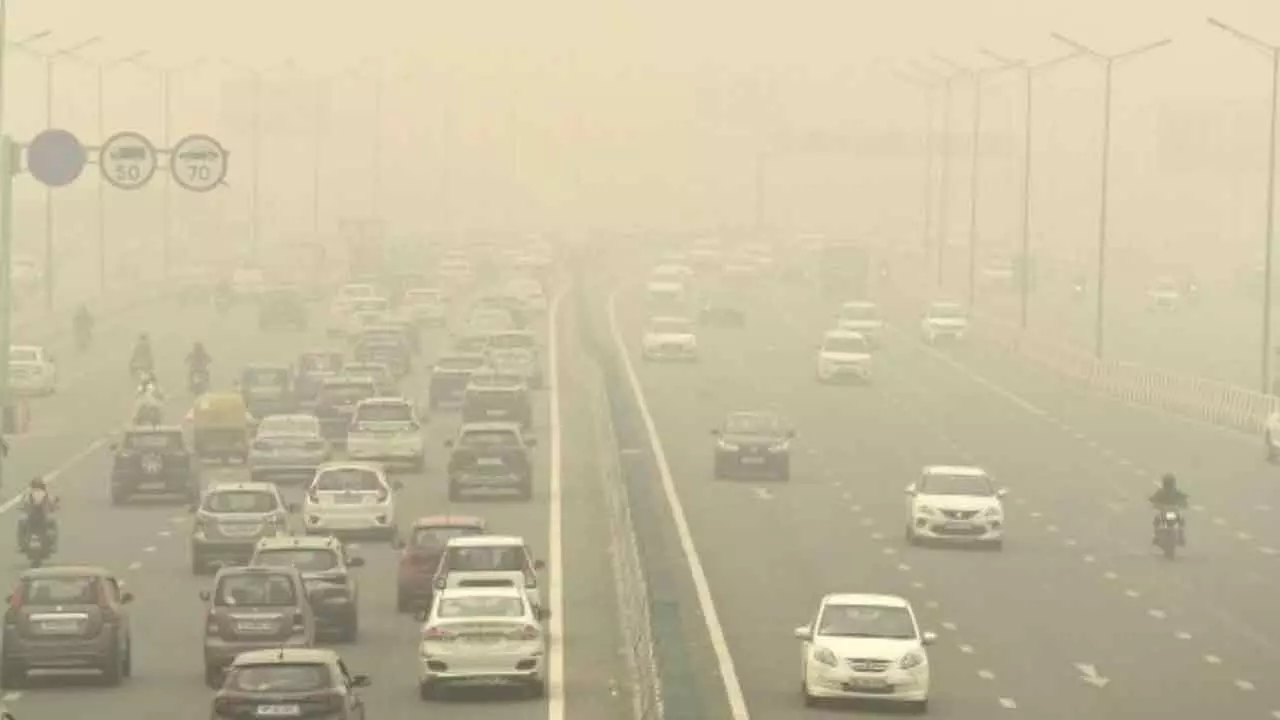Winter PM2.5 Trends Paint A Bleak Picture For Mega Cities
While cities in the Indo-Gangetic Plain like Delhi and Kolkata remain heavily burdened due to adverse meteorology, even coastal and southern cities such as Mumbai, Chennai and Bengaluru witnessed worsening local pollution
Winter PM2.5 Trends Paint A Bleak Picture For Mega Cities

Irrespective of their diverse geographic and climatic contexts, the megacities of India – Delhi, Mumbai, Kolkata, Bengaluru, Hyderabad and Chennai - have seen worsening PM2.5 levels during the winter of 2024-25 (October 1, 2024-January 31, 2025). The overall level and the peaking points of pollution have, however, varied across cities depending on the meteorological conditions of different climatic zones.
This has emerged from a new analysis of real time PM2.5 data in these cities during the winter period. The analysis, done by Centre for Science and Environment (CSE), has evaluated pollution trends in peer megacities and provides insights into long-term seasonal variations and annual shifts in particulate pollution during winter.
While Delhi, located in the land-locked Indo-Gangetic Plains (IGP) with adverse meteorology, has recorded the highest level of pollution during winter, Kolkata -- also at the tip of the IGP – ranks second. The megacities outside the IGP -- Mumbai, Chennai, Hyderabad and Bengaluru -- despite having more advantageous climatic conditions and natural ventilation, have also experienced increases in average PM2.5 concentrations.
Other than Delhi and Chennai, all other megacities have recorded city-wide winter averages that are comparatively lower than the average of the past three winters; but the concentrations across different locations have been high, leading to high exposures. “The peaking of pollution during winter in any climatic zone is a sign of the underlying problem of persistent air pollution in these rapidly urbanising and motorising cities. The growing impact of local sources of pollution shows up in the pollution hotspots across these cities, increasing local exposures and risks,” says Anumita Roychowdhury, executive director, research and advocacy, CSE.
“These cities need stringent action to curb pollution from all sources to meet the clean air standards. But urban centres like Delhi and Kolkata that face an additional challenge of adverse meteorology which enhances the concentrations, need even more stringent action to counter these effects,” Roychowdhury adds.
According to Sharanjeet Kaur, programme officer with the Urban Lab at CSE, “While Delhi’s winter air quality often dominates public discourse, rising pollution levels in other megacities remain largely overlooked. Despite some improvement in seasonal pollution trends, winter pollution continues to remain high or has been rising locally.”
The methodology behind the CSE analysis
This is an assessment of annual and seasonal trends in PM2.5 concentrations for the period October 1 to January 31 in the years 2021-22, 2022-23, 2023-24, and 2024-25. Data points have been cleaned and data gaps addressed based on the USEPA method. The analysis has been done on the basis of real time data available from currently working air quality monitoring stations in Delhi, Kolkata, Mumbai, Chennai, Hyderabad and Bengaluru -- 115 continuous ambient air quality monitoring stations (CAAQMS) have been covered. Delhi (40), Kolkata (seven), Mumbai (31), Hyderabad (14), Bengaluru (14) and Chennai (nine) have more than one real time station, therefore city-wide averages have been used for comparative analysis: it is defined as average of all city stations that have been functional for the given study period.
During this winter, Kolkata and Hyderabad were most polluted after Delhi, while Mumbai, Chennai and Bengaluru saw the fastest worsening of localised pollution levels: Delhi, with a winter average PM2.5 level of 175 microgramme per cubic metre (µg/m³) remains the most polluted megacity by a large margin during winter, even though the winter average has shown improvement over the previous winter. In the other five megacities, the average winter PM2.5 level was 65 µg/m³ in Kolkata; 52 µg/m³ in Hyderabad; 50 µg/m³ in Mumbai; 36 µg/m³ in Chennai; and 37 µg/m³ in Bengaluru. Kaur points out that winter averages cannot be directly compared with a 24-hour average or an annual average. She says: “Indicatively, daily standards for PM2.5 are 60 µg/m³ and annual standards are 40 µg/m³. But city average is not an adequate indicator for high exposures in these cities.”
Longer-term trend in winter averages in mega cities: When compared to the three-year average, Delhi remained the worst performer, with average winter pollution levels continuing to rise, even though by just 1 per cent higher than the average of the last three years.
Compared to the winter of 2021-22, Mumbai, Kolkata and Hyderabad show improvement with their winter PM2.5 levels dropping by 16 per cent, 14 per cent and 16 per cent respectively.

